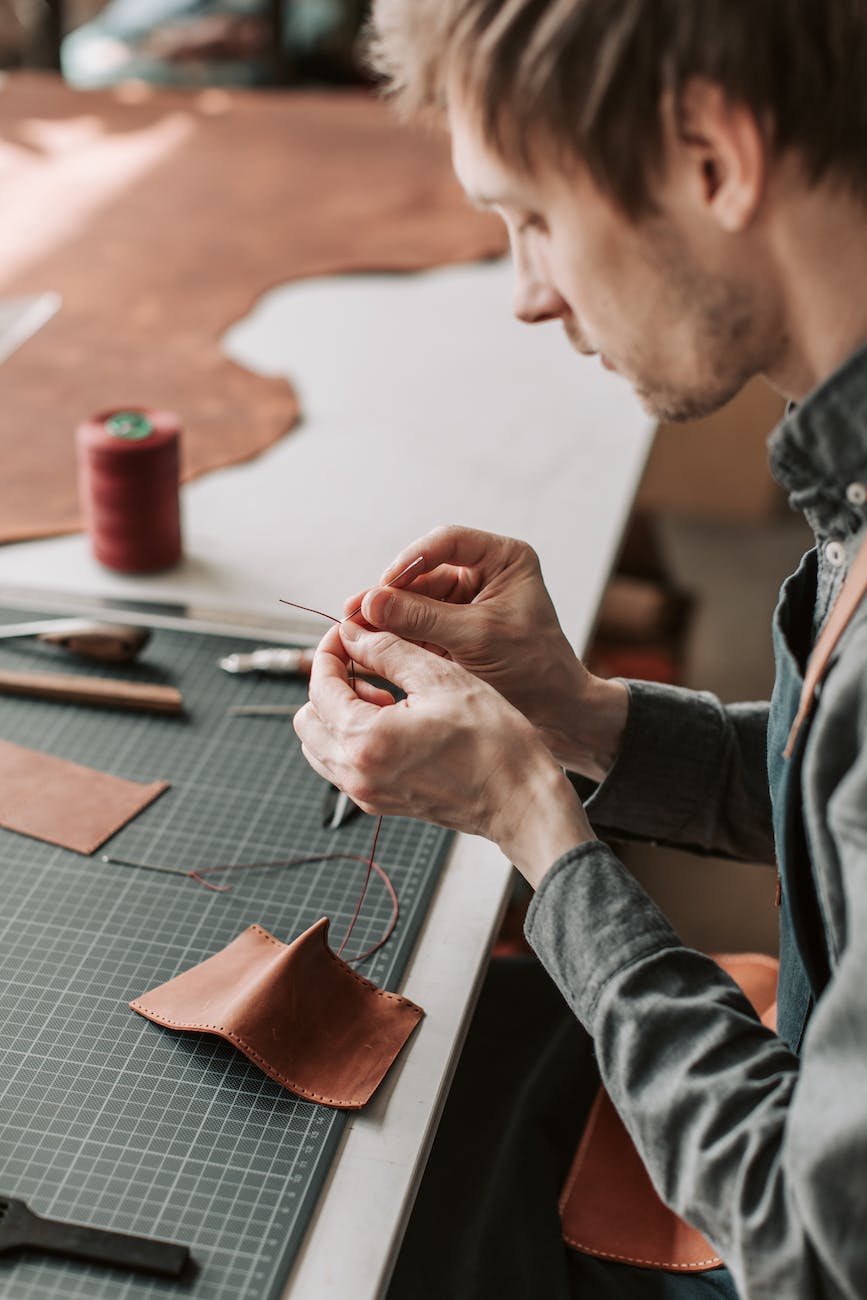Sustainable Leatherworking: Embracing Eco-Friendly Approaches
Sourcing Environmentally Responsible Hides and Leather
With growing ethical consumer awareness, many makers seek reliably sourced hides not linked to feedlot cruelty, deforestation, or harmful chemicals. Certifications help navigate choices mindfully.
Leatherworking co-ops trace hides back to sustainable ranches practicing holistic grazing without clearing rainforests. Some use hides from organic dairy farms or animals that died naturally.
Standards like Leather Working Group certification assess tanneries on energy, waste, water, emissions, and transparency. Consumer pressure encourages environmental diligence.
Utilizing Byproduct Leather From Meat Industry
Most leather today comes from inevitable dairy and meat industry byproduct hides that would otherwise get discarded as waste. Using these plentiful existing remnants first makes sustainable sense.
After slaughter for food, leftover skins get collected by tanneries where they get meticulously processed into leather, giving the animals additional purpose. Nothing gets wasted unnecessarily.
This efficient model provides quality hides without incentivizing mistreatment or overproduction. The economy of scale makes sustainable leather affordable and widely available.
Supporting Leather Alternatives and Innovation
For products where leather proves unnecessary, alternatives like waxed cotton, cork, mushroom mycelium “leather”, and recycled synthetics provide appealing eco-options without sacrificing quality.
Pineapple leaf fibers get processed into non-woven textiles resembling natural suedes in appearance and performance, but biodegrade back to the soil. Leftover rags upcycle into woven ropes. Fibers derive from fungi mycelium or food crop waste like banana stems.
Material science constantly improves plant and mineral leather analogues, expanding creative possibilities with less environmental impact. Performance and sustainability co-evolve through conscious innovation.
Optimizing Layouts and Reducing Waste
Conscientious design and production processes reduce leather waste by utilizing optimized layouts and repurposing or upcycling any remnants that do result. Thrift counters excess.
Digital nesting software maximizes yield from every hide through analyzing and efficiently arranging pattern pieces to minimize gaps. Scraps get creatively incorporated into small items or unique patched pieces.
Careful cutting within Thresholds decreases discarded cutoff amounts. Excess gets donated to schools, recycled for shoes, or composted. A little stretching follows leather’s natural forms.
Employing Renewable Tanning Agents
Traditional vegetable tanning methods utilize natural renewable resources like tree bark, leaves, fruits and earth minerals over harsher chemicals. Their gentler chemistry suits artisanal context.
Mimosa, chestnut, oak and hemlock bark produce gentle leathers perfect for delicate garment and upholstery applications. Environmentally sound minerals like magnesium, potassium, and alum derive from the earth’s geology and require no synthesis.
Hair-on tanning retains hides’ original fiber rather than remove it for pelts, celebrating leather’s organic origins. Green chemistry aligns with time-tested techniques.
Hand Tooling Over Power Machinery
Working leather by hand rather than industrial machinery greatly reduces the overall energy consumption of leather production. Manual practices echo heritage.
Using handheld knives, stamps, needles, and specialized manual tools allows control and customization impossible in mass production but sufficient for small batch studios. The slower pace values sustainability.
The hands-on experience bonds crafters to their materials and the lineage of skills passed down over millennia that machines disrupt. Refusing automation keeps human connections alive.
Natural Plant Dyeing Over Synthetics
Seeking renewable non-toxic plant dye sources over synthetic chemical dyes diminishes leatherworking’s environmental impact through holistic botanical methods.
Onion skins, walnut hulls, turmeric roots, blackberries, marigolds and hundreds of other common plants produce vibrant lasting dyes through solar extraction. Mordants like iron, alum and vinegar fix hues.
Nature’s seasonal palette inspires dynamic color exploration guided by sage trial and error built up over time. Each batch of organic dyes tells ingredients’ stories through unique nuanced hues.
Making Leather Products Last Through Repair
Promoting leather goods longevity through teaching customers care and repair allows reducing new production waste through restoring worn items to usefulness. Mending matters.
Workshops demonstrate cleaning, hole patching, seam reinforcements, hardware replacements, protective storage and when to call in a professional for rehabilitation of well-loved items given new life after rescue from landfill.
Encouraging patrons to value leather’s heirloom nature empowers reducing discard mentality. Maintenance skills empower communities to double or triple leather’s usable lifespan through diligent stewardship.
Recycling and Upcycling Secondhand Leather
Local unused leather donations provide an abundant upcycling material source. Reimagining remnants into new pieces divert scraps from disposal.
Makers reinvent worn vintage leather apparel into modern wallets and handbags. Scrap leather swatches get sewn into sculptural wall artworks. Sweaters become mittens. Belts transform into dog collars. Resourcefulness prevails.
Seeing value instead of cost in rescued materials reveals unexpected beauty in imperfections. Wise reuse offers inspiration beyond wastefulness. Even small remnants continue serving creatively.
Eco-Conscious Workshop Practices
Managing equipment, waste, and supplies in workshops sustainably improves efficiency and minimizes environmental harms through conserving choices:
- LED lighting, occupancy sensors, and insulation reduce power usage
- Vegetable oil lubricants replace toxic petroleum options
- Solar or human-powered equipment skips fossil fuels
- Compost all biodegradable leather remnants and scraps
- Reuse shipping cartons, packing materials, and pallets
- Use least toxic glues and finishes suited to each application
Small everyday acts by leatherworkers add up to meaningful impact across a collective community embracing responsibility both on and off the workshop bench.
Sustainable leatherworking values honoring precious ethically sourced hides from animals that nourished humanity over exploiting and abusing them. These approaches thoughtfully balance ethical priorities and beautiful artistry so neither gets compromised for the other’s sake. With care and creativity, leathercraft perseveres in harmony.
